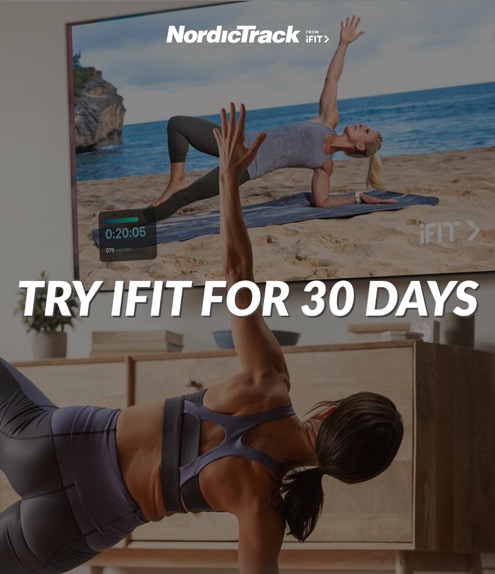
You might think that high-intensity interval training (HIIT) is only for the young, spry, and athletic. Think again! No matter how old you are, HIIT can offer a plethora of benefits. And if done safely, it can be a fantastic addition to your exercise routine.
Before we dive in, though, if you’re short on time, consider these key takeaways:
- High-Intensity Interval Training Defined: HIIT involves short, intense bursts of activity followed by a brief period of rest or low-intensity exercise. It’s efficient and can help you achieve fitness results in shorter sessions.[1]
- Age is Just a Number: Age is Just a Number: No matter your age, HIIT can be an integral part of your exercise routine, combating age-related changes like reduced metabolism and muscle mass.[2]
- Benefits Galore: HIIT isn’t just about burning calories; it can improve cardiovascular health, muscle strength, reduce the risk of chronic diseases, and even sharpen your cognitive functions.[3]
- Safety First: As with any workout, there are risks. But with a planned approach – starting slow, choosing low-impact exercises, listening to your body, and always consulting with a healthcare professional – you can enjoy HIIT’s benefits safely.[4]
- Frequency Matters: Aim for 2-3 HIIT sessions a week, ensuring you have rest days in between to allow your body to recover.[5]
Now that you know the basics, let’s take a closer look at how you can incorporate HIIT into your schedule, no matter how many candles are on your birthday cake!
What is High-Intensity Interval Training (HIIT)?
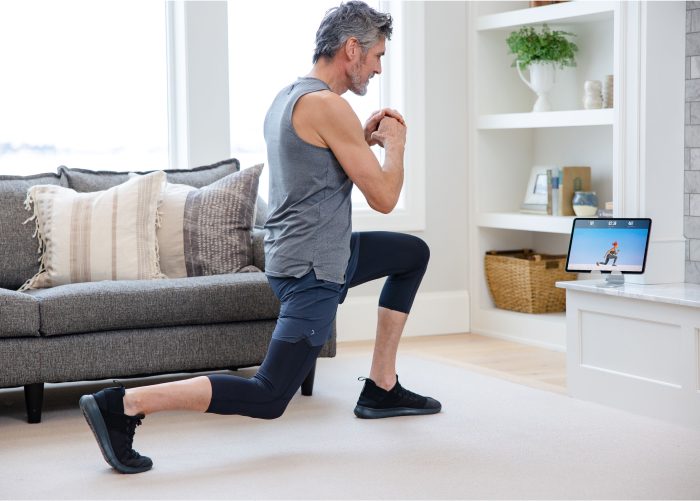
HIIT is a form of exercise that involves short, intense bursts of physical activity followed by a brief period of rest or low-intensity exercise. These cycles are repeated several times throughout a workout.
So, instead of, let’s say, slogging through an hour-long steady-state cardio session, you could be burning calories and improving your fitness in as little as 20 minutes! This method capitalizes on the body’s ability to sustain maximum effort in short spurts, potentially leading to greater caloric burn and metabolic boosts long after the workout is over.[6]
The efficiency and effectiveness of HIIT have made it a popular choice among fitness enthusiasts and professionals alike.
Should You Do HIIT in Your 30s, 40s, and Beyond?

The short answer is, yes! As we age, our bodies undergo various changes – reduced metabolism, loss of muscle mass, and a decrease in cardiovascular fitness.
But guess what can help combat all these changes? You guessed it, HIIT. Age is just a number, and when it comes to HIIT, it’s more about how you approach it, but make sure you consult a medical professional first.
Adapting your exercise routine to include HIIT may help reverse some age-related declines, keeping you feeling energized and youthful. With the proper guidance and modifications, HIIT can become a transformative tool in your fitness journey.[7]
- Improves Cardiovascular Health: Vigorous exercise, such as HIIT, has been shown to improve cardiovascular health by increasing heart rate and pushing the cardiovascular system, thereby improving heart function and efficiency.[8]
- Increased Muscle Strength and Endurance: The vigorous nature of HIIT means that various muscle groups are worked hard, potentially leading to increased strength and endurance.
- Reduced Risk of Chronic Disease: Regular exercise, including HIIT, can help reduce the risk of chronic diseases like diabetes, hypertension, and even some forms of cancer.[9]
- Improved Cognitive Function: Believe it or not, general physical activity, like HIIT workouts, can also benefit your brain! A study found that high-intensity workouts improved cognitive function in older adults.[10]
Incorporating HIIT into your routine not only bolsters physical health but can also sharpen the mind, making it an invaluable component of holistic well-being for older adults.
Is HIIT Safe for Older Adults?
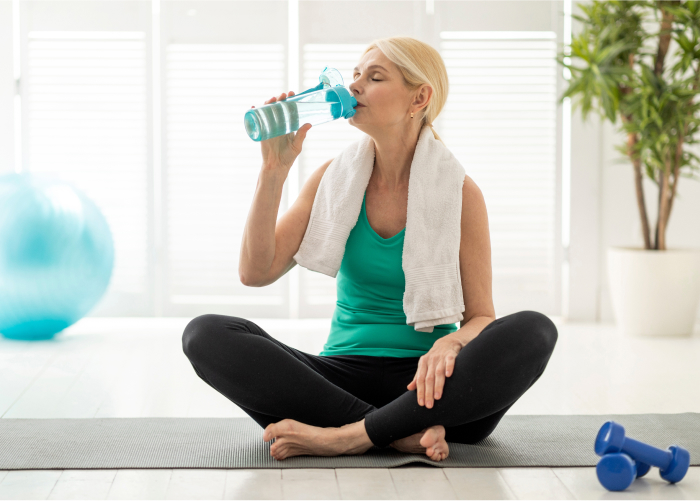
Like any exercise program, there are inherent risks. This can lead to an increased risk of injuries, particularly if not done correctly. But with the right precautions, HIIT can be both safe and effective.
How to Reduce Risks of HIIT:
- Talk to a Doctor First: Before starting any new exercise regimen, especially something as intense as HIIT, consult with your healthcare professional.[11]
- Start Slowly and Gradually: Rome wasn’t built in a day, and neither is fitness. Begin with lower-intensity intervals and shorter workouts. As your stamina improves, you can gradually increase the intensity.
- Choose the Right Exercises: As we age, the risk for injuries increases. Opt for appropriate exercises to maintain strength and balance without overexerting yourself.
- Listen to Your Body: This isn’t the time to push through pain. If something doesn’t feel right, it’s essential to stop, assess, and make adjustments if necessary.
- Take Breaks When Needed: The ‘rest’ phase in HIIT is there for a reason. Make sure to utilize it, and if you need more time, take it.
Ultimately, while HIIT offers numerous benefits, it’s vital to approach it with care and awareness, ensuring that each workout enhances your well-being rather than jeopardizing it.
How Often Should You Do HIIT Workouts?

The frequency of HIIT workouts is a matter of personal preference, current fitness level, and how one’s body responds to the intensity of the exercises.
For someone just beginning their HIIT journey, it’s essential to start with a frequency that feels manageable and gradually increase as the body becomes more accustomed to the training.
- Assess Your Current Fitness Level: If you’re new to HIIT or have taken a break from fitness, you might want to start with one session a week and monitor how your body reacts. This will provide insight into your recovery time and how much stress the workouts place on your body.
- Individual Recovery Time: Recovery is a crucial component of HIIT. While some might find they can bounce back quickly, others might need a few days to fully recover. Paying attention to muscle soreness, energy levels, and sleep can give cues about your body’s recovery rate.
- Quality Over Quantity: Remember that HIIT is designed to be intense. It’s more beneficial to have two or three highly effective and safe HIIT sessions per week than to try and do it every day and risk injury or burnout.[12]
- Listen to Your Body: Over time, as you become more accustomed to the workouts, you might find that you can increase the frequency. However, it’s always essential to listen to your body. If you start feeling chronic pain, extreme fatigue, or decreased performance, it might be a sign that you’re overdoing it and need more rest.
- Incorporate Other Exercise Modalities: It’s also beneficial to mix HIIT with other forms of exercise like strength training, yoga, or steady-state cardio. This variety not only helps prevent overuse injuries but also ensures a balanced fitness routine.[13]
While 2-3 HIIT sessions a week is a good general guideline, it’s important to adjust based on your personal needs and how your body responds. Always ensure there’s at least one rest day between HIIT sessions to allow your body to recover and repair effectively.
The Bottom Line
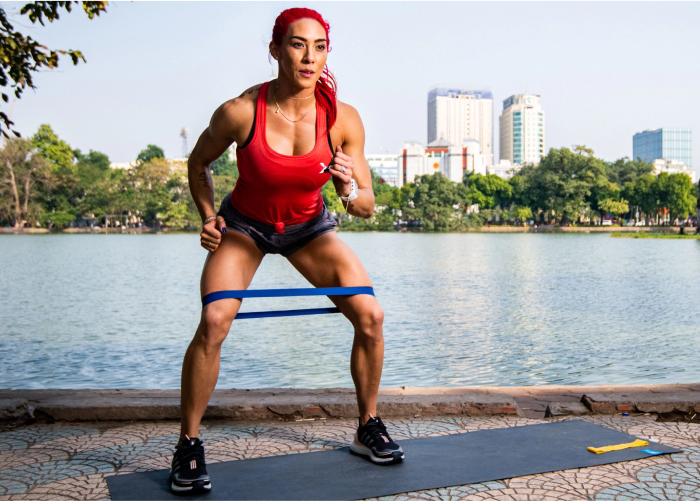
HIIT transcends age barriers and stands as a testament to the versatility of fitness routines available today. While often associated with the youthful vigor of athletes in their prime, HIIT is much more inclusive than it seems.
Age, in the realm of HIIT, truly becomes just a backdrop, while individual goals, health considerations, and fitness levels play a more defining role.
So, whether you’re just starting out, reigniting a long-lost passion for fitness, or searching for a fresh challenge, HIIT is a formidable contender to consider.
Approach it with an open mind, a commitment to safety, and a spirit of exploration, and you might just discover a newfound zest for exercise.
Dive in, stay safe, and savor every heartbeat, every drop of sweat, and every accomplishment.
Here’s to a fitter, healthier, and more vibrant you!
Want more HIIT? Check Out These Beginner Workouts!
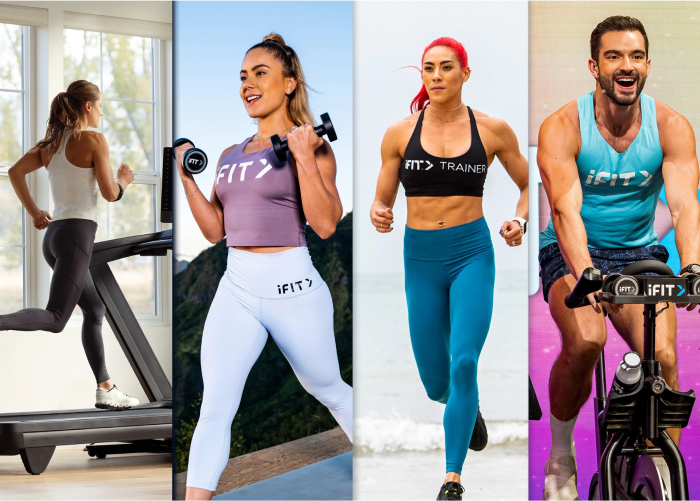
- 3 Quick HIIT Workouts For Beginners
- Beginner Workouts Combining HIIT And Your Home Treadmill
- Combining HIIT And Incline Training With An iFIT Workout
- Hawaii Yoga HIIT Series
- Bolivia Beginner Cardio HIIT Series
- Quick Fire HIIT Series
Footnotes:
- Gibala, M. J., Little, J. P., Macdonald, M. J., & Hawley, J. A. (2012). Physiological adaptations to low‐volume, high‐intensity interval training in health and disease. The Journal of Physiology, 590(5), 1077-1084.
- Robinson, M. M., Dasari, S., Konopka, A. R., Johnson, M. L., Manjunatha, S., Esponda, R. R., … & Nair, K. S. (2017). Enhanced protein translation underlies improved metabolic and physical adaptations to different exercise training modes in young and old humans. Cell metabolism, 25(3), 581-592.
- Kessler, H. S., Sisson, S. B., & Short, K. R. (2012). The potential for high-intensity interval training to reduce cardiometabolic disease risk. Sports Medicine, 42(6), 489-509.
- American College of Sports Medicine. (2013). ACSM’s guidelines for exercise testing and prescription. Lippincott Williams & Wilkins.
- Weston, K. S., Wisløff, U., & Coombes, J. S. (2014). High-intensity interval training in patients with lifestyle-induced cardiometabolic disease: a systematic review and meta-analysis. British Journal of Sports Medicine, 48(16), 1227-1234.
- Boutcher, S. H. (2011). High-intensity intermittent exercise and fat loss. Journal of Obesity, 2011.
- Irving, B. A., Davis, C. K., Brock, D. W., Weltman, J. Y., Swift, D., Barrett, E. J., … & Weltman, A. (2008). Effect of exercise training intensity on abdominal visceral fat and body composition. Medicine and science in sports and exercise, 40(11), 1863.
- Swain, D. P., & Franklin, B. A. (2006). Comparison of cardioprotective benefits of vigorous versus moderate intensity aerobic exercise. The American journal of cardiology, 97(1), 141-147.
- Warburton, D. E., Nicol, C. W., & Bredin, S. S. (2006). Health benefits of physical activity: the evidence. Cmaj, 174(6), 801-809.
- Stillman, C. M., Cohen, J., Lehman, M. E., & Erickson, K. I. (2016). Mediators of physical activity on neurocognitive function: a review at multiple levels of analysis. Frontiers in human neuroscience, 10, 626.
- American College of Sports Medicine. (2013). ACSM’s guidelines for exercise testing and prescription. Lippincott Williams & Wilkins.
- Gibala, M. J., McGee, S. L., Garnham, A. P., Howlett, K. F., Snow, R. J., & Hargreaves, M. (2009). Brief intense interval exercise activates AMPK and p38 MAPK signaling and increases the expression of PGC-1α in human skeletal muscle. Journal of Applied Physiology, 106(3), 929-934.
- Rhea, M. R., Alvar, B. A., Burkett, L. N., & Ball, S. D. (2003). A meta-analysis to determine the dose response for strength development. Medicine & Science in Sports & Exercise, 35(3), 456-464.
Disclaimer: This blog post is not intended to replace the advice of a medical professional. The above information should not be used to diagnose, treat, or prevent any disease or medical condition. Please consult your doctor before making any changes to your diet, sleep methods, daily activity, or fitness routine. iFIT assumes no responsibility for any personal injury or damage sustained by any recommendations, opinions, or advice given in this article. Always follow the safety precautions included in the owner’s manual of your fitness equipment.


